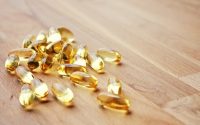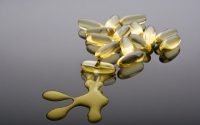What are Unsaturated Fats?
Unsaturated fat is one of the three main types of fats, the other two being saturated fat and trans fat. These unsaturated fats are perhaps more commonly known as vegetable oils, since they are almost always plant-based, although there are some naturally unsaturated fats in certain meats. This type of fat remains in a liquid or oily state at room temperature, and is thought to be the healthiest option of the three types of fat; some examples of unsaturated fat include corn oil, olive oil, canola oil, and peanut oil. Polyunsaturated and monounsaturated fats are two types of unsaturated fat, the main difference between them being how many double bonds occur in their structure.
Saturated Fat Versus Unsaturated Fat
Unsaturated and saturated fat are essentially composed from the same raw ingredients, including carbon and hydrogen atoms. Saturated fats, such as the fat formed in animals, contain chains of carbon atoms with single bonds to hydrogen atoms; because the chain of fat contains all the hydrogen it can hold, it is considered to be fully saturated with hydrogen. The result is a solid fat product, like butter or lard, which studies have shown can lead to heart disease if eaten in excess. While it may be unwise for some people to eliminate all saturated fat from one’s diet, using unsaturated fat alternatives, such as olive or canola oils, may be beneficial.
Unlike saturated fat, fat that is unsaturated usually contains an unstable amount of hydrogen atoms — the result is a chain of fat that is lacking hydrogen atoms. Due to the lack of hydrogen, the fat chain is generally unstable and ripe for attack from oxygen atoms, which may cause it to turn rancid. This form of fat is considered to be unsaturated, because it has not taken on all the hydrogen it can hold, and the fat will remain liquid at room temperature because of its incomplete bonding process. The liquid form is also what makes cooking oils ideal for certain recipes and cooking processes, since they do not solidify as easily as saturated fats.
Trans Fat Versus Unsaturated Fat
Through a process called hydrogenation, a new form of fat is formed called trans fat, or partially hydrogenated vegetable oil. Hydrogenation can occur because unsaturated fat still has room to accommodate hydrogen atoms; by bubbling pure hydrogen gas through tanks of unsaturated fats, trans fat can be made. This new form of fat combines the stability and solidity of saturated fats with the cost benefits of unsaturated fats, but is also responsible for increased plaque formation. Consumers seeking a truly healthy diet should avoid trans fats, partially hydrogenated oils, altogether and limit daily fat intake to less than 30% of the total calorie count.
Advantages
Health experts are quick to point out the advantages of unsaturated fats over saturated or trans fats when following heart-healthy diets. The reason why unsaturated fat is considered healthier than the other types of fat is due to the nature of the fat molecules once they reach the bloodstream; saturated or trans fat molecules have a natural tendency to bond with each other on contact, which eventually leads to the formation of artery-clogging plaque. Unsaturated fat, however, contains larger molecules that tend to slide past each other in the bloodstream, which results in little to no plaque build-up; some studies have shown that unsaturated fat can help improve a person’s blood cholesterol levels.
Disadvantages
One major disadvantage of unsaturated fats, such as olive oil or canola oil, is that they will eventually turn rancid as oxygen molecules from the air mix with the hydrogen and carbon atoms in the fat. As a result, most commercial food producers do not use many unsaturated fats in their products. Products typically made with unsaturated fat, such as cookies or fried snacks, would only last a few days on store shelves; however, using unsaturated fat to make these same products is okay if they will be eaten within a relatively short amount of time. Also, while unsaturated fat may be considered the healthiest of the three types of fat, it is still unhealthy if eaten in excess or without other necessary nutrients.



